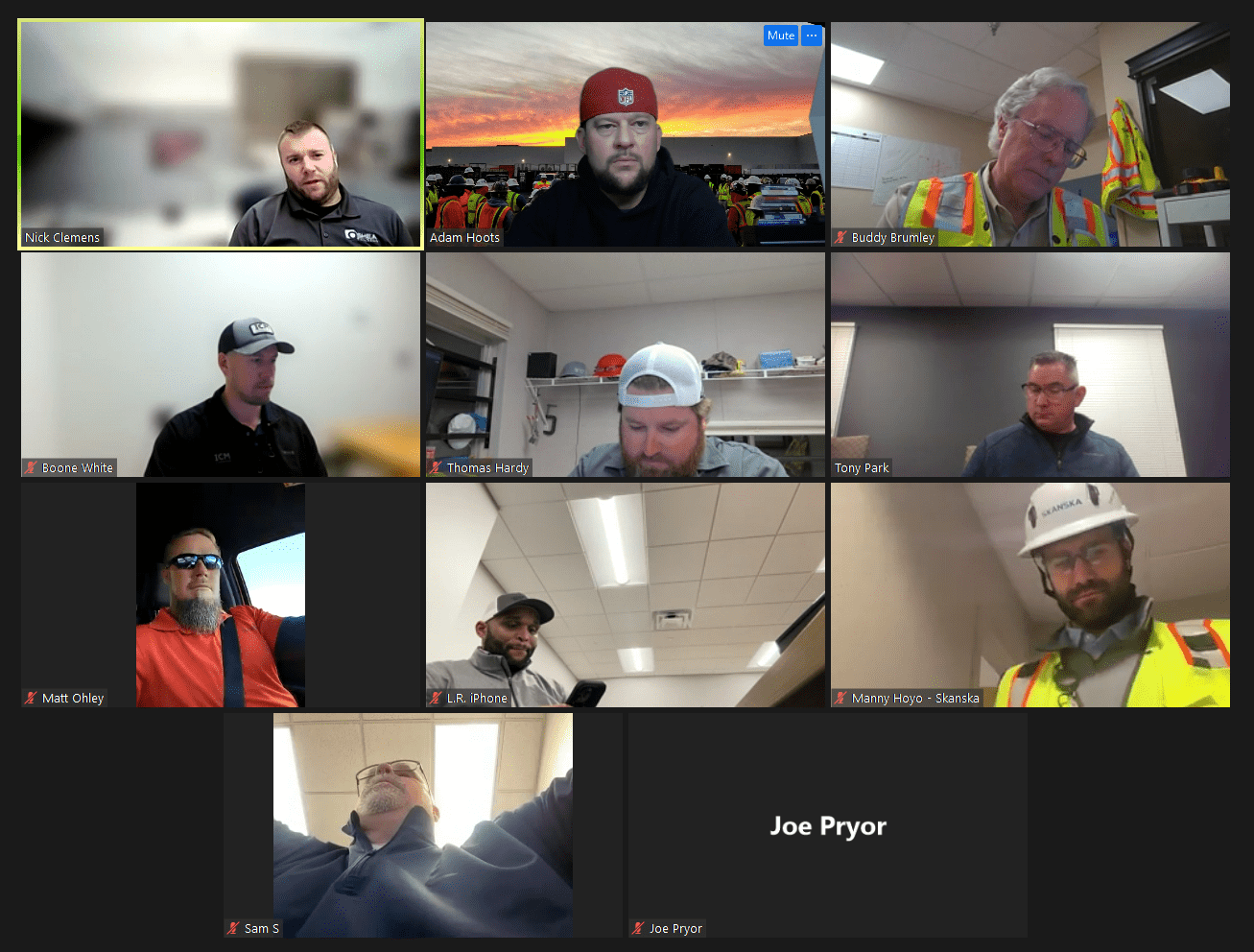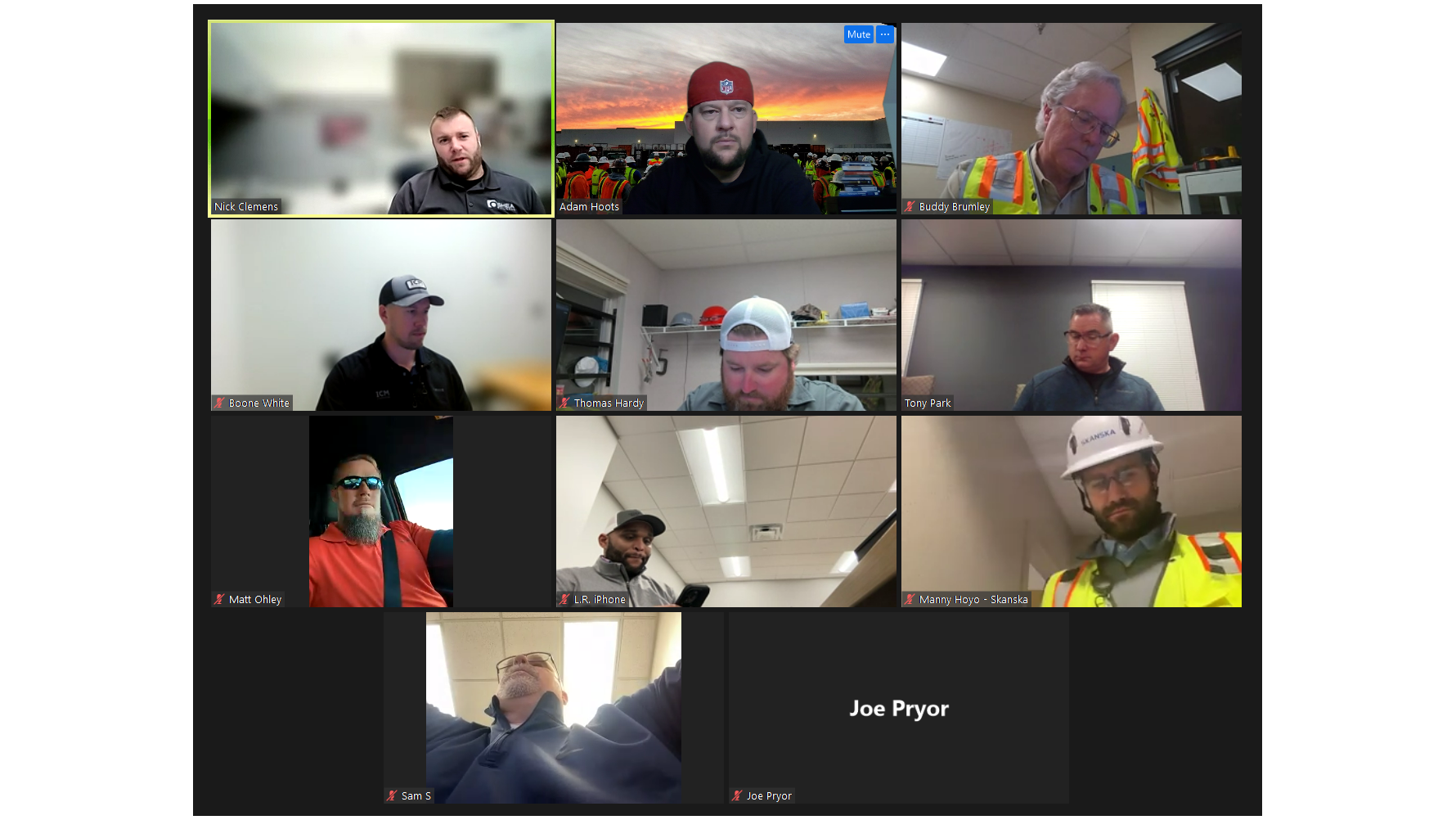Case History 1 (continued):
What a Successful Peer-to-Peer Superintendents Group Learned
By Dan Fauchier
Fourth in the Series
Previously I reported that for over two years now, my friends and colleagues, Adam Hoots and Buddy Brumley, have been organizing and facilitating “Old Dawg Real Field Talks”, a twice monthly virtual meeting of superintendents and a couple of trade foremen tackling topics of immediate interest in the field.
Many of our readers were intrigued by the questions the Old Dawgs had posed, and wanted to know what their responses were. Well, here’s the voice of literally centuries of experience!
- What is the first thing you would do when taking over a project that is near the finish line, stagnate, poor communication and zero Lean. (7/21/22)
- Listen. Address problems. Start with the trade partners. Find and mine the foremen for information.
- Establish a link to prevent becoming sheriff “cold turkey.”
- Communicate first. Understand what’s happening. Be sure to get along with the owner.
- Find and address “islands”: people who have all the information in their heads, which is a blocker to successful communication.
- Listen. Address problems. Start with the trade partners. Find and mine the foremen for information.
- What is the first thing you would do when taking over a project that is near the finish line, stagnate, poor communication and zero Lean. (7/21/22)
- You cannot just be a cheerleader. You need to provide honest, constructive feedback. “Here are some things we need to improve on.” Blunt and honest can be interpreted as mean and cruel, though, for Gen Z. Know what motivates them. Try not to give up on anyone. Show the cause and effect.
- How do we help develop successful habits with trade partners? (1/19/23)
- Trades have tunnel vision on their own focus – Broaden the tunnel vision on the “cohesive” team.
- Create a family like atmosphere on the project site.
- You get what you accept.
- The project is a pizza – everyone takes their slice and not many often look at how their piece fits into everyone.
- Positive peer pressure
- MAKE IT FUN! Keep it simple.
- We tend to make people accountable for things they have not learned yet.
- When Leading through change how do you make it sticky? (1/19/23)
- When people experience value – that is where you make it sticky!
- Surprise them by treating them respectfully. It has a real impact.
- Be consistent. It helps cultivate a culture of mutual respect.
- Appealing to people’s hearts and minds! Not just the logic but also the value proposition.
- Make it fun! Addictive!!
- What’s your advice on projects that have already been going for a few months and trying to implement Daily Huddles/ Last Planner®? (1/19/23)
- Start small with one group of people!
- Design your board such that it is a natural gathering place for people to congregate.
- Be deliberate about putting action items on the board.
- Use a milestone to transition into the daily huddles!
- Make sure you have a limited amount of time and stick to it.
- Develop lean advocates among the crew to evangelize and get other folks onboard.
- Don’t make the project fit lean. Make lean fit the project!!

- How are we separating the person from the process in tough situations? (5/18/23)
- Sometimes it is the person’s fault.
- Maybe the old school folks blame people a little too much, maybe we should change our attitude!
- Even newer folks feel the same way. There is just this vibe that construction puts off!
- Accountability Matrix!
- Push back on command and control being no good.
- Sometimes people have biases or blind spots
- 5 levels of delegation podcast!! https://youtu.be/FliGqjnTQCg
- Everybody has different motivators, you have to take the time to learn what they are and work to them.
- They key is knowing when to apply command and control.
- What is the worst part about lean? (5/18/23)
- Participation!! Hard to get people on board!!
- Implementation – We can get them in and plan together. The transition from philosophy to execution in the field!!
- Moving from concept to application.
- Maintaining implementation away from the pull plan.
- The stigma and the way it’s presented!!
- Lean doesn’t fix shit! It shows you your problems to allow you to fix them!
- Sounds like the difficult part of lean.
- A lot of misunderstandings about lean!! We need to get rid of them.
- If people think they understand but they don’t really understand!!
- Overcoming your own insecurity.
- Let’s be honest – none of us know what we are doing individually but collectively we know exactly what we are doing!
- Managing the hype and making expectations realistic
- We need more consistency with what lean is!!
- Bouncing from lean to un-lean projects.
- The superintendent can really influence this…sometimes.
- “If you are not improving, you are not doing lean.”
- What are the most important factors when attempting to implement lean principles on your construction site? (9/21/23)
- A good environment! where people are ok with talking to each other about problems.
- Proper Onboarding to the project site
- Rules of engagement
- Conditions of satisfaction
- Establishing the culture on a site
- Respect for people – Using people’s names, Know who they are, see what they’re doing, and listen to when they’re talking! Ask interested questions, not interesting questions!
- Understanding and setting values for the project. (What do we (entire project team) value as a project team?)
- Fear of failure
- What skills will the 2030 Superintendent need to have in order to be successful? (8/17/23)
- Multi-lingual – Spanish perspective!
- Soft skills – new generation – Can’t beat people over the head – be careful with criticism – direction on how to do things – don’t just tell them how to do something but more ask them how they think they should do something.
- You have to be able to manage a relationship! Now there are 6 different levels of leadership – which category does the person you’re trying to get to do something fit in?
- Active follow up vs. passive follow up.
- Collaboration, facilitation, and listening.
- Creating psychological safe environments.
- Develop interpersonal communication skills.
- The business knowledge of construction.
- The customer service aspect – more interaction with the end users these days. Learning how to artfully say no when it’s called for.
- How to deal with conflict, when it’s tough.
And that’s only a small portion of the wisdom this group shared with each other as the months rolled by. They’re still at it, peer-to-peer, twice a month.

